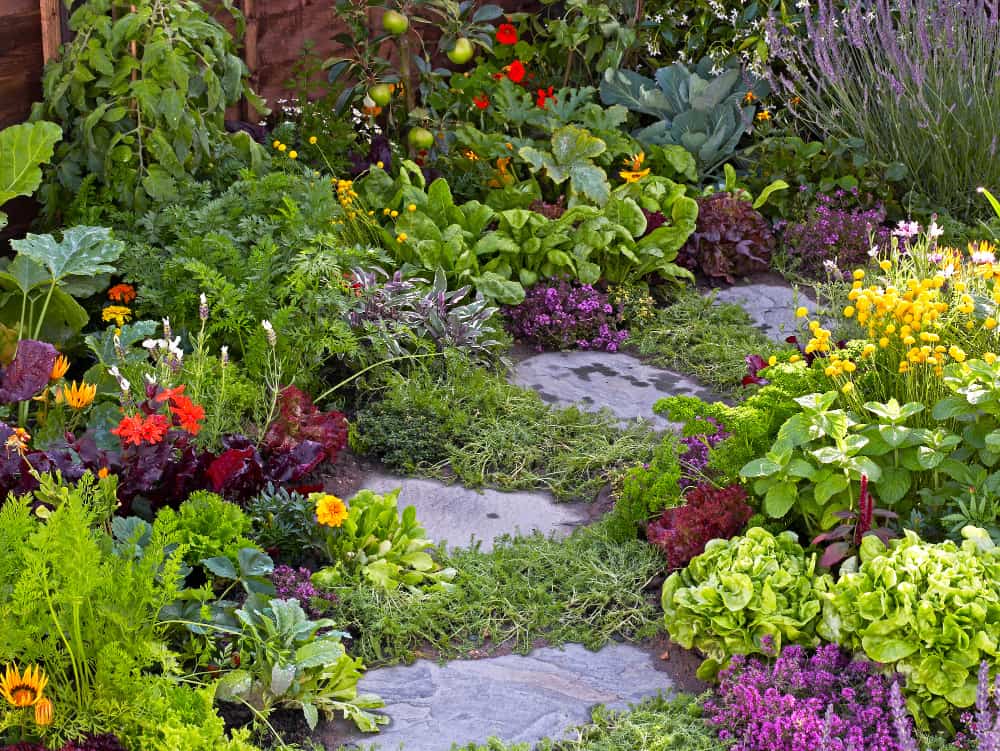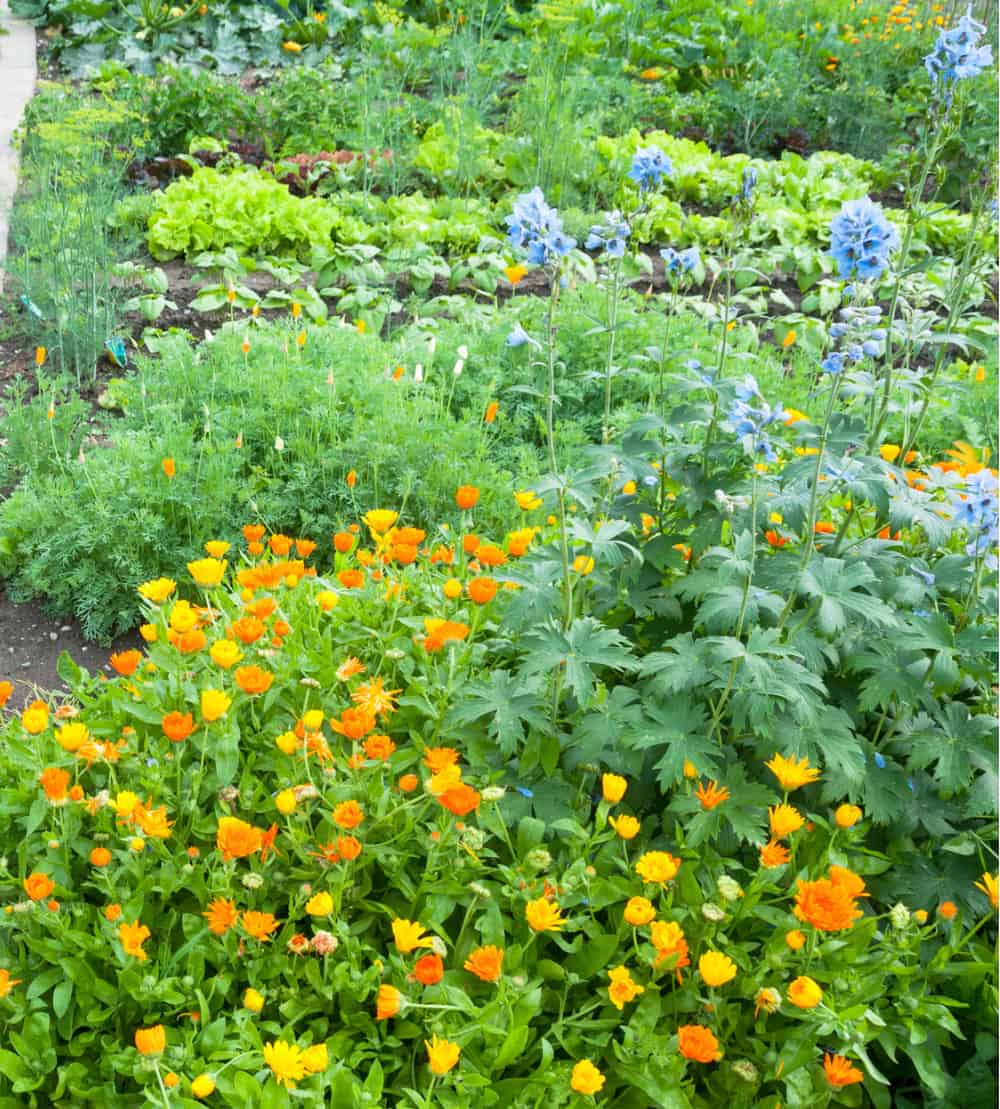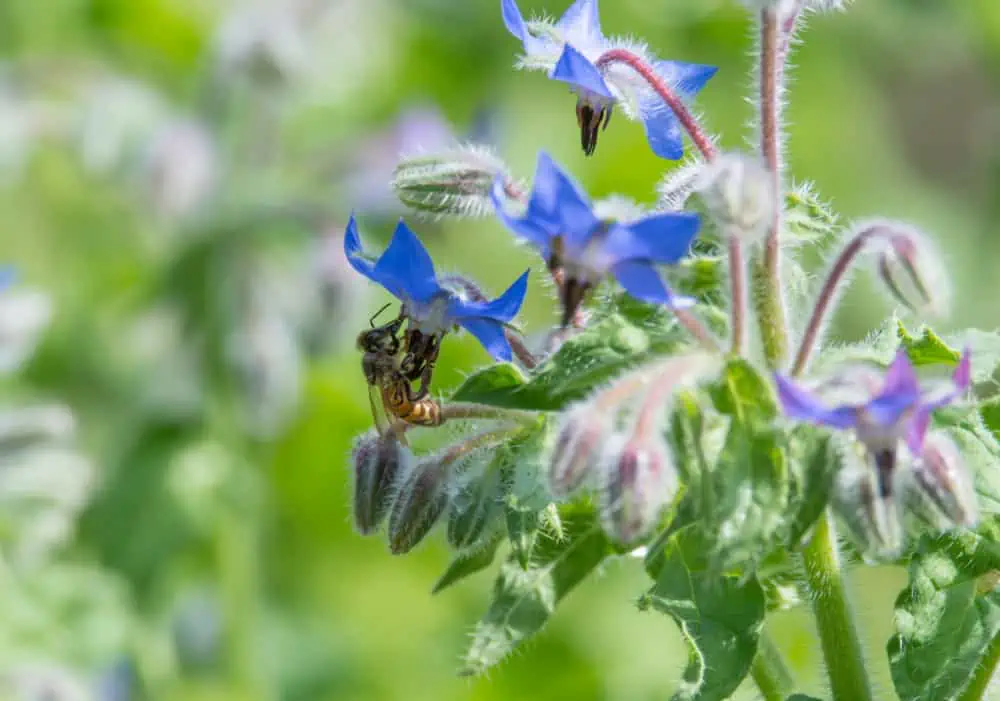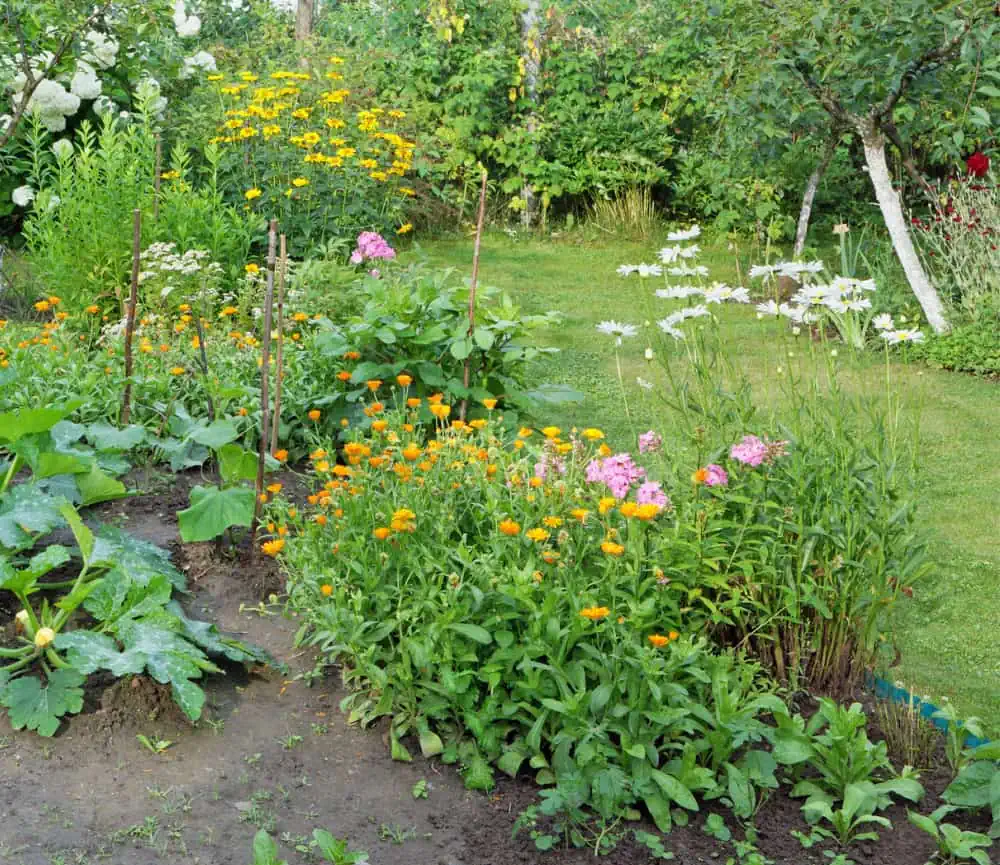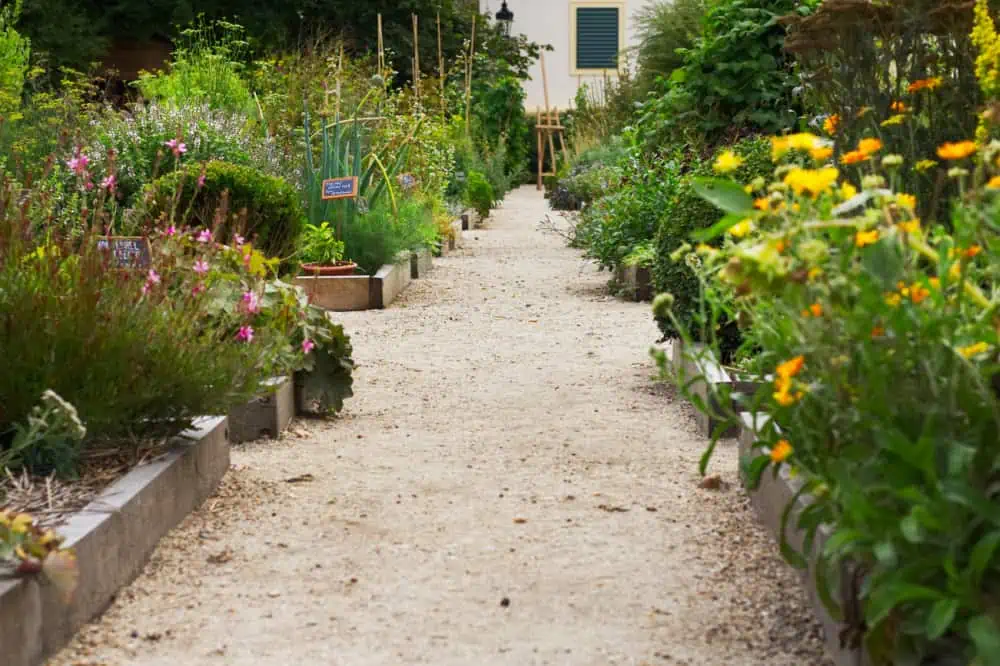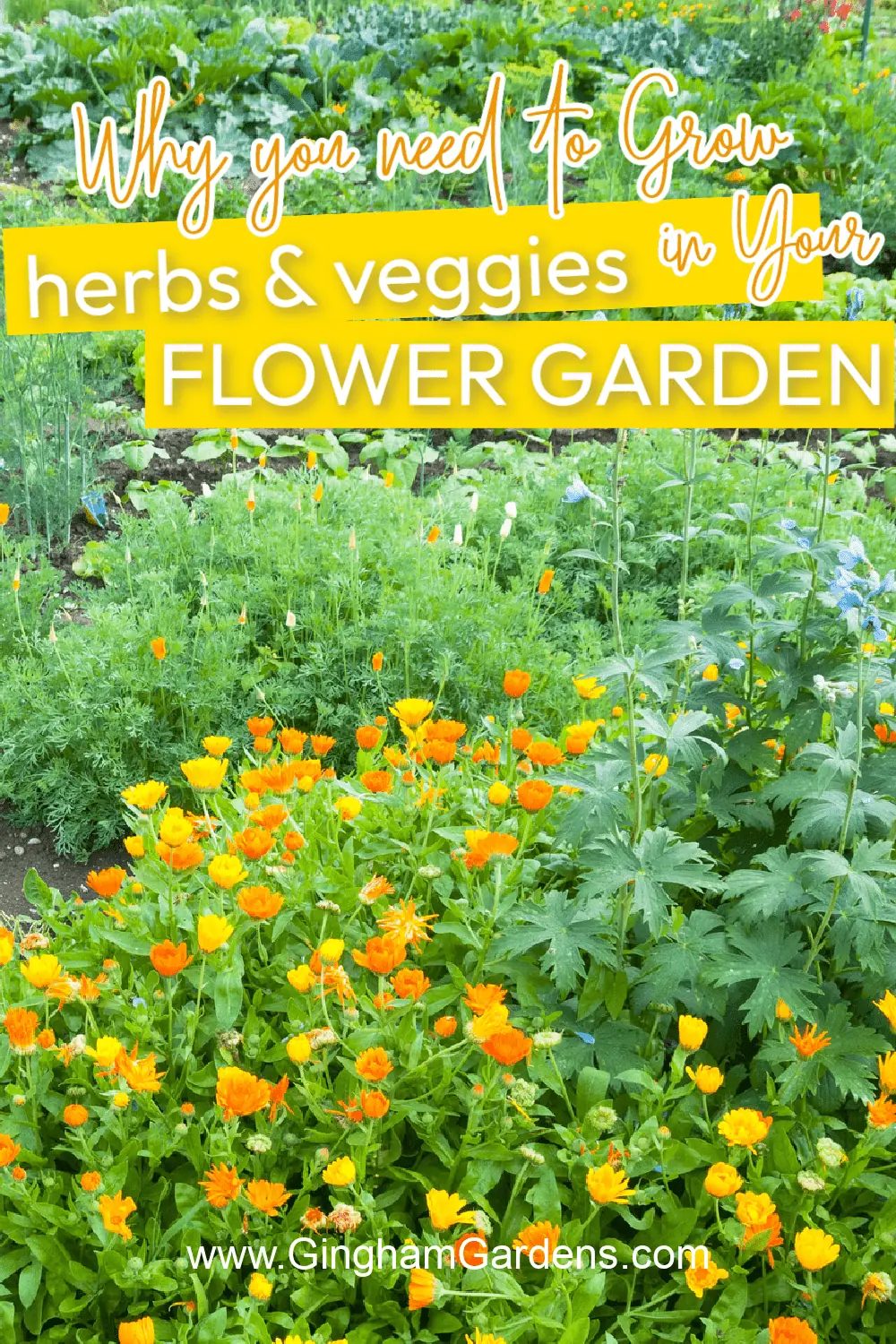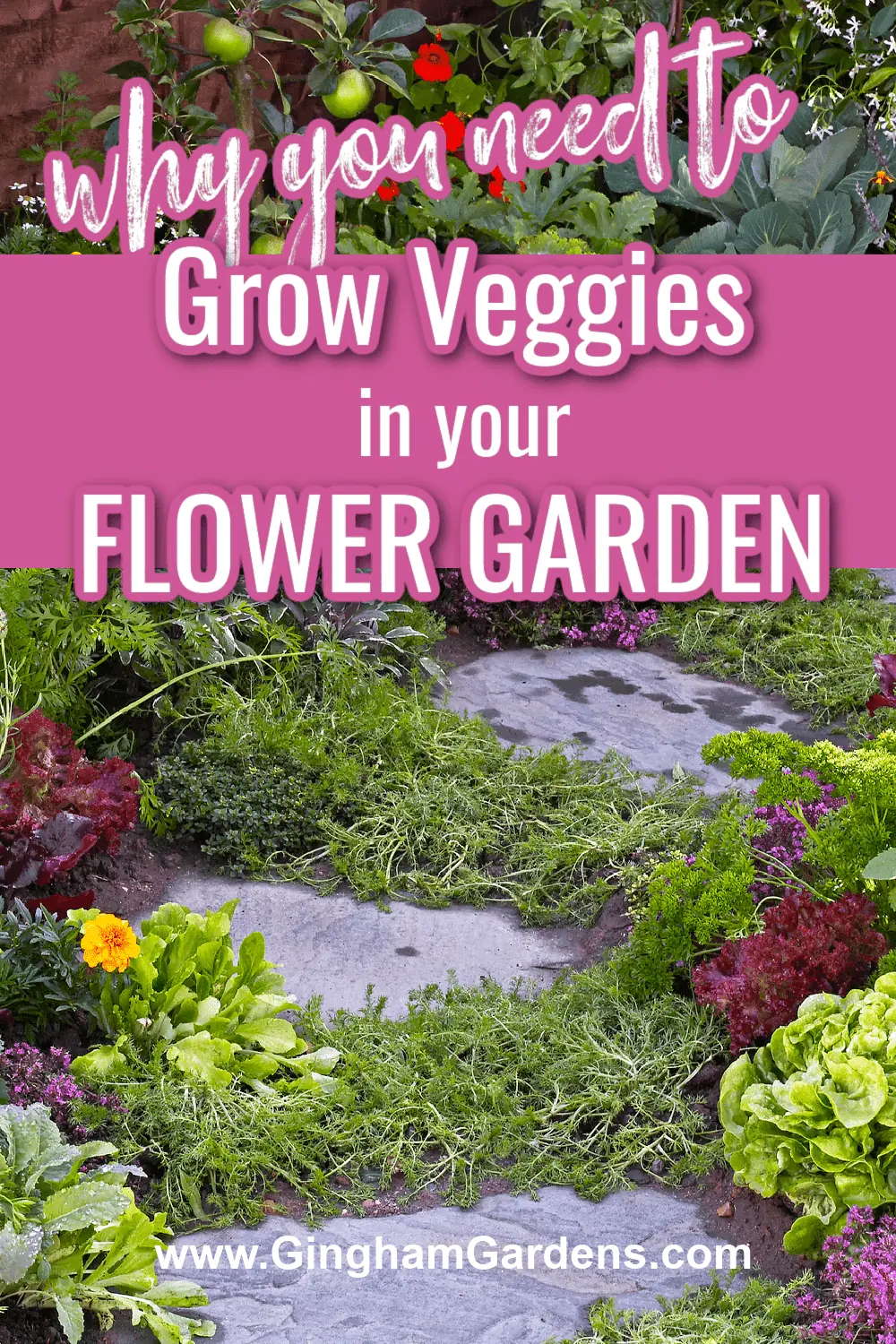Why Adding Herbs and Veggies to a Flower Garden is a Great Idea
If you’re like most people you probably tend to think about flower gardens and veggie gardens in separate spaces. Of course, it’s very common for vegetable gardeners to include flowers in their garden plan, but what about adding herbs and veggies to a flower garden?
Aesthetically speaking, there are lots of gorgeous herbs and vegetable plants that would be right at home amongst your annual flowers and perennial flowers. The textures and foliage of herbs and vegetables can add beauty to your flower garden beds. Think about the fluffy texture of a carrot top or the texture of kale plants.
I tend to think of myself more as a flower gardener than a vegetable gardener and my flowers take up most of the full sun real estate in my yard. So, a vegetable bed that gets the hours of sun it needs just isn’t a priority. The perfect solution is adding herbs and veggies to my flower beds. With fresh produce prices continuing to escalate at the grocery store, it’s becoming more important to grow a vegetable crop.
Are you more of a container gardener? These tips and ideas all work well with container gardening too.
This post contains affiliate links. If you click on
one of the links and make a purchase,
I may receive a small commission at no additional cost to you.
See full disclosure here.
Why Add Herbs and Vegetables to your Flower Garden
Keep reading to learn…
- the added benefit of companion planting
- why incorporating an herb garden with your flowers is a good idea
- what types of vegetables can be planted with flowers
- plus things to consider in your garden design
It’s not every day that you see a flower garden with veggies and herbs incorporated into it. Now, I have seen this as a landscape feature at different arboretums or botanical gardens and they are very attractive, but it’s not usually something you see in home gardens.
While growing herbs and veggies is done mostly for consumption, adding these plants to your flower bed is a great way to add another level of visual interest. Not to mention the pure delight of getting to enjoy the fruit of your labors.
The added benefit of companion planting
As a result of companion planting you can increase the fertility of your plants by attracting pollinators, repelling pests and diseases, all while suppressing weeds. Flowering plants attract bees and other pollinators, and that’s a win, win.
Some people think all bugs are pests, but there are beneficial insects as well.
Did you know that the earwigs’ favorite food is aphids? A friend told me about a gardening podcast she had listened to where the host had set traps for her earwigs, then moved them under her fruit trees and within 1 week the earwigs had taken care of her aphid problem. Amazing! Nasturtiums, sunflowers and nicotiana work well for attracting aphids away from edible plants.
While companion plants that are grown for pest control can repel pests, a trap crop is grown specifically to attract pests thereby sacrificing that crop in order to save another. If you attempt growing a trap crop, make sure you do your homework and place those plants in containers so they can be moved away from your key plants and vegetables.
Attracting Bees to Pollinate Your Vegetables
Likewise, pollinators are always a welcome sight in any garden. When you think about the effects of a decreasing bee population, it sure motivates you to do your part to create little sanctuaries for them.
Why incorporating an herb garden with your flowers is a good idea.
Let’s face it, you cannot beat having fresh herbs in your recipes. And you don’t have to be a master chef to enjoy them. Plus, herbs have a powerful impact on your health too.
Your flower garden will also benefit from having herbs growing nearby. For example, in England it’s common to plant chives near rose bushes to deter aphids and other pests that like to snack on them. So, we’re right back to companion planting.
Do you realize that many of the flowers we grow in our gardens are actually herbs. There’s bee balm, agastache, feverfew and lavender just to name a few.
The Best Herbs to Add to Your Flower Garden
Here’s a list of herbs that do well as companion plants in your Garden
- Basil – repels mosquitos and other pests
- Chives – deter pests
- Dill – attracts beneficial insects
- Cilantro – deters pests and attracts beneficial insects
- Parsley – attracts insects that feed on pests
- Oregano – attracts beneficial insects
- Mint – deters pests but is invasive
- Tarragon – known as a nurse plant. It helps any plant it’s near and deters pests
- Marjoram – attracts beneficial insects like pollinators
These herbs are more particular when it comes to companion planting, so keep that in mind when planting them with other herbs…
- Rosemary – attracts beneficial insects and repels pests
- Lavender – attracts beneficial insects and repels pests
- Sage – attracts pollinators
Storage Tip: for certain herbs that go well in soups and sauces you can wash, cut and freeze them in ice cube trays with a little water. Once frozen you can store them in freezer Ziploc bags and use in your favorite recipes later on.
Have you ever used a food dehydrator for drying herbs? It works great! However, I recommend putting it in your garage if you are dehydrating chives or green onions. The smell can be overwhelming. Once dehydrated, store them in an airtight container.
Another benefit of adding herbs to your flower beds is the pure sensory aspect. Great smelling herbs, along with fragrant flowers… it can’t get much better than this. In other words, if you add herbs to your garden beds, you can’t lose.
What types of vegetables can be planted with flowers?
Quite simply you can plant anything you like to eat. Unless you really love the look of certain vegetable plants (swiss chard I’m looking at you), I wouldn’t plant it unless you and your family enjoy eating it. However, if you end up growing more than you can use, it’s always fun to be able to share your bounty with friends and neighbors. Not to mention there are ways to preserve what you grow – like canning and freezing, but that’s a whole separate topic. Check out this post for some great ideas for dealing with excess veggies from your garden.
On the other hand, you will want to be cautious if you have poisonous ornamental plants growing near your edible plants. It’s possible to harvest some of the bad with the good, so take extra care when picking and washing your produce to make sure a stray flower or leaf didn’t get mixed in.
If you need suggestions, here are some of my favorite vegetables that could easily be included in your flower garden.
Bush type veggies
These aren’t all bushes per say, but have a bushy quality to them.
- Tomato plants – will need to be pruned and caged so they don’t get too unruly
- Peppers (sweet or hot)
- Bush beans
- Broccoli
- Rhubarb
- Squash (bush varieties)
- Cucumber (bush varieties)
- Asparagus (a perennial vegetable)
- Artichokes
- Eggplant
- Purple cabbage
- Sweet Peas
Low Growing Leafy Greens and Salad Greens to Add to your Flower Gardens
You can use these vegetables as cover crops too.
- Lettuces
- Spinach
- Kale
- Swiss chard
Climbing Vine Vegetables to Grow in a Flower Garden
If you are limited on space, consider growing vertically. Trellises can take any garden space and make it interesting.
- Pole Beans
- Peas
- Sugar snap peas
- Melons
- Pumpkins
- Cucumbers (vine varieties)
- Squash (vine varieties)
Root Vegetables and Bulbs to Plant in A Flower Garden
These don’t have to be planted in straight rows. You can make clusters throughout your garden, just allow for enough space between each plant.
- Onion
- Leeks
- Garlic – repels deer and rabbits
- Beets
- Radish
- Carrots
Things to Consider with Garden Design When Adding Herbs and Veggies to Your Flower Gardens
When you think about adding to your perennial garden it’s always a good idea to consider the design as a whole. While most garden beds evolve over time, whether it be a raised bed, or small garden, a good plan is worth every moment you spend on it.
First, you’ll want to think about location. Most herbs and vegetables need at least 6 hours of sun a day and well-draining soil.
Second, consult seed catalogs or seed packets to get an idea of the size and spacing you’ll need. Naturally, you want to make sure your plants don’t cast too much shade on your sun loving flowers and vice versa.
Now if you plant more shade-loving herbs and vegetables, you’ll want to consider their placement as well.
Next, make sure you think about how much water a plant will require. It’s best to put some distance between water-loving plants and drought-loving plants. Some vegetables require a lot of water. Tomatoes get especially thirsty in the hot summer months.
Finally, when considering fertilizer for your flower beds, make sure you choose one that is safe for edible plants as well. While certain brands claim they are safe for consumption, I tend to err on the safe side and use more natural fertilizers rich in organic matter such as manure and compost.
All in all, you can’t go wrong with adding herbs and vegetables to your flower garden. If you can grow flowers, you can definitely grow vegetables. Do you grow vegetables and herbs in amongst your flowers? If not, are you going to try it? I’d love to hear your thoughts and ideas, so please share your experience in the comment section below.
Happy gardening,
Joanna
More Great Things on Gingham Gardens
Sign up to receive our weekly newsletters full of gardening tips. You’ll also get access to our Gardening Resources Library and all our helpful gardening printables.
More places to find Gingham Gardens:
- Visit Gingham Gardens on Pinterest.
- If you’re on Facebook, Gingham Gardens is also on Facebook.
- Stop by Gingham Gardens’ Amazon store!
- Love Etsy? Come see us on Etsy too.
Pins to Save to Your Favorite Gardening Board:

